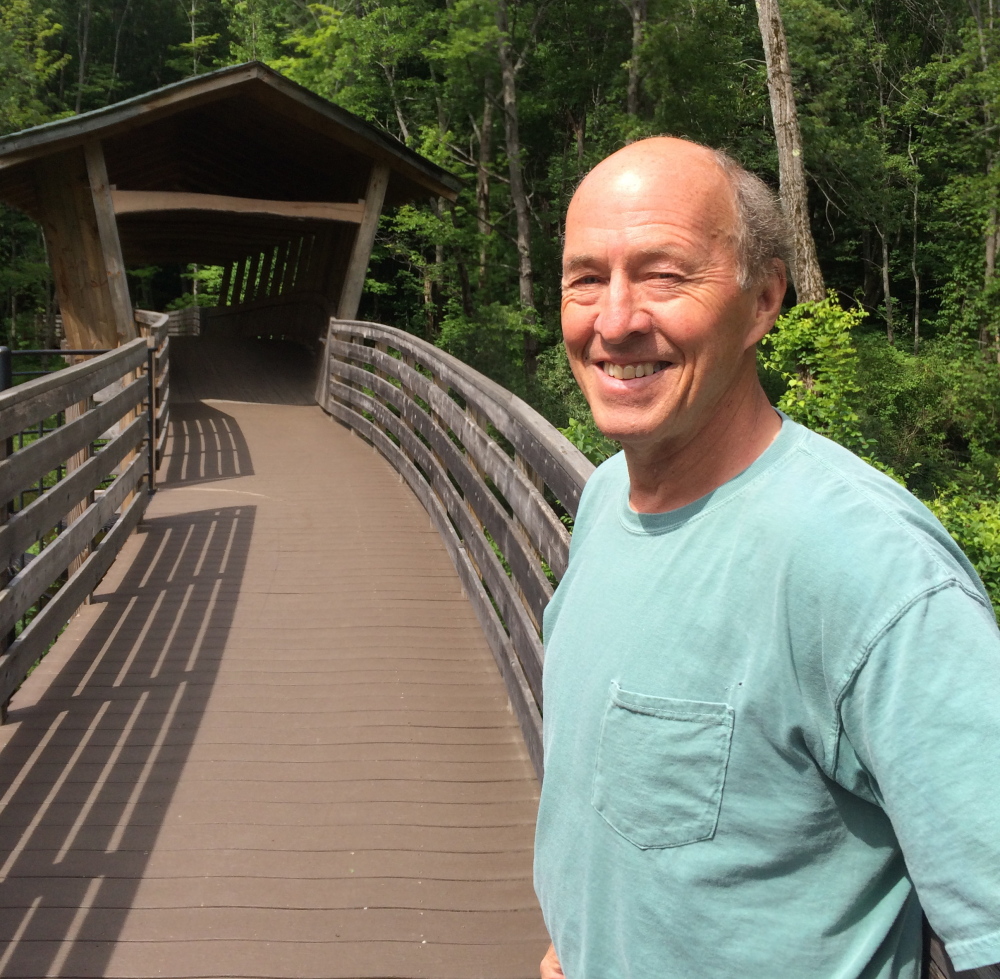BRIDGTON — Peter Lowell has led the 46-year-old Lakes Environmental Association for 42 years and helped it launch state programs to help keep Maine lake water clean.
The association has helped launch the boat-cleaning stations used throughout the state and helped establish the milfoil stickers that raise state funds to fight the invasive water plant.
This week the association’s new Maine Lakes Science Center in Bridgton opens its first public program. But it will do more than educate the public about clean water, conservation and ecological issues. The science center, with a computer lab, conference rooms and dorms for university researchers, all housed under one roof, is intended to be the campus where conservation ideas are hatched. It is a gathering place for the public and scientists to work together.
The association has been working for the past six years with five Maine colleges and universities to expand lake research, so a science center made sense, Lowell said. Its 17-acre campus is connected to Bridgton’s 60-acre Pondicherry Park.
Where will it take the association next? Lowell said 42 years has taught him sometimes not knowing the next step allows big ideas to happen.
LEA was at the forefront of work on the milfoil problem when it hit Maine. When was that?
We sponsored a summit in 2000. We looked at what other states were doing. At the first summit we had speakers from other states and we invited legislators. That got the bandwagon rolling. Out of that came the Invasive Species Program at (the Maine Department of Environmental Protection). We pioneered the courtesy boat inspection (and boat wash) stations as part of the program. But the big thing was the program provided grants with money from the (milfoil boat) sticker for towns and lake associations for plant control.
How do you feel about the work the association has done on the milfoil problem?
I feel great because we’re not beholden to anyone. We take an aggressive position on issues. Our donors, most of them anonymous, and our membership allow us to. In the ’70s we were mostly vigilantes in terms of identifying untreated waste discharge into rivers and pointing out shoreline violations. In the ’80s we worked with the courts. And in the ’90s we developed partnerships with towns, getting towns to understand by working for clean water we are protecting their economic base as well as the environment.
How’s the whole state doing in general with the milfoil fight?
We are doing well given the challenges. We’ve done well to prevent new infestations and in fighting the problem in some places. Others really need help. It’s just getting started on Messalonskee Lake and Lake Arrowhead has been fighting it.
We started spreading blue tarps on the bottom of lakes. We are now experimenting with burlap bags, which are biodegradable. It kills the vast majority of milfoil. We are pioneering this approach.
We started Brandy Pond and the Songo River with 10 acres of milfoil. We just did a survey and we have one small patch. We’ve been at it for 10 years and spent hundreds of thousands. But what we are finding is if you hit it hard, there’s hope.
In recent years what new work has LEA done?
About six years ago we were uncomfortable with the fact lake testing was finding algae in lakes. We just saw a number of lakes deteriorating but nobody had a good handle on what the tipping point was. We started looking around at what academic communities were doing. We realized we needed to do something proactive to spread their work and knowledge. One university researcher back then trained us to test lakes for gloeotrichia (a blue-green algae), and we now test 30 to 40 lakes for it. All told there are 20 researchers we have contacted or collaborated with the last three years.
So how did the Lakes Science Center come about?
(Laughs) It started five years ago as an idea. Once the tidal wave started, it just kept rolling. What we’re trying to do is not new: to connect people. We are the facilitator to help connect the researchers with the lakes associations in Maine. The water districts help. But you’ve got a lot of people trying to move the ball down the field. The thing is, once lakes start to go it will be difficult to get them back to their natural state.
The Maine Lakes Science Center is about bringing in scientists but it’s also about the social science, how to inspire people to take care of their lakes. It’s 50-50, you need the knowledge (but also) to honestly motivate people. We have started a capital campaign for the property, the building, the operating cost, for $1.2 million. We’ve raised $600,000. Originally we hoped to have it open by 2020. But we were able to raise enough to get it up and running.
Send questions/comments to the editors.




Success. Please wait for the page to reload. If the page does not reload within 5 seconds, please refresh the page.
Enter your email and password to access comments.
Hi, to comment on stories you must . This profile is in addition to your subscription and website login.
Already have a commenting profile? .
Invalid username/password.
Please check your email to confirm and complete your registration.
Only subscribers are eligible to post comments. Please subscribe or login first for digital access. Here’s why.
Use the form below to reset your password. When you've submitted your account email, we will send an email with a reset code.